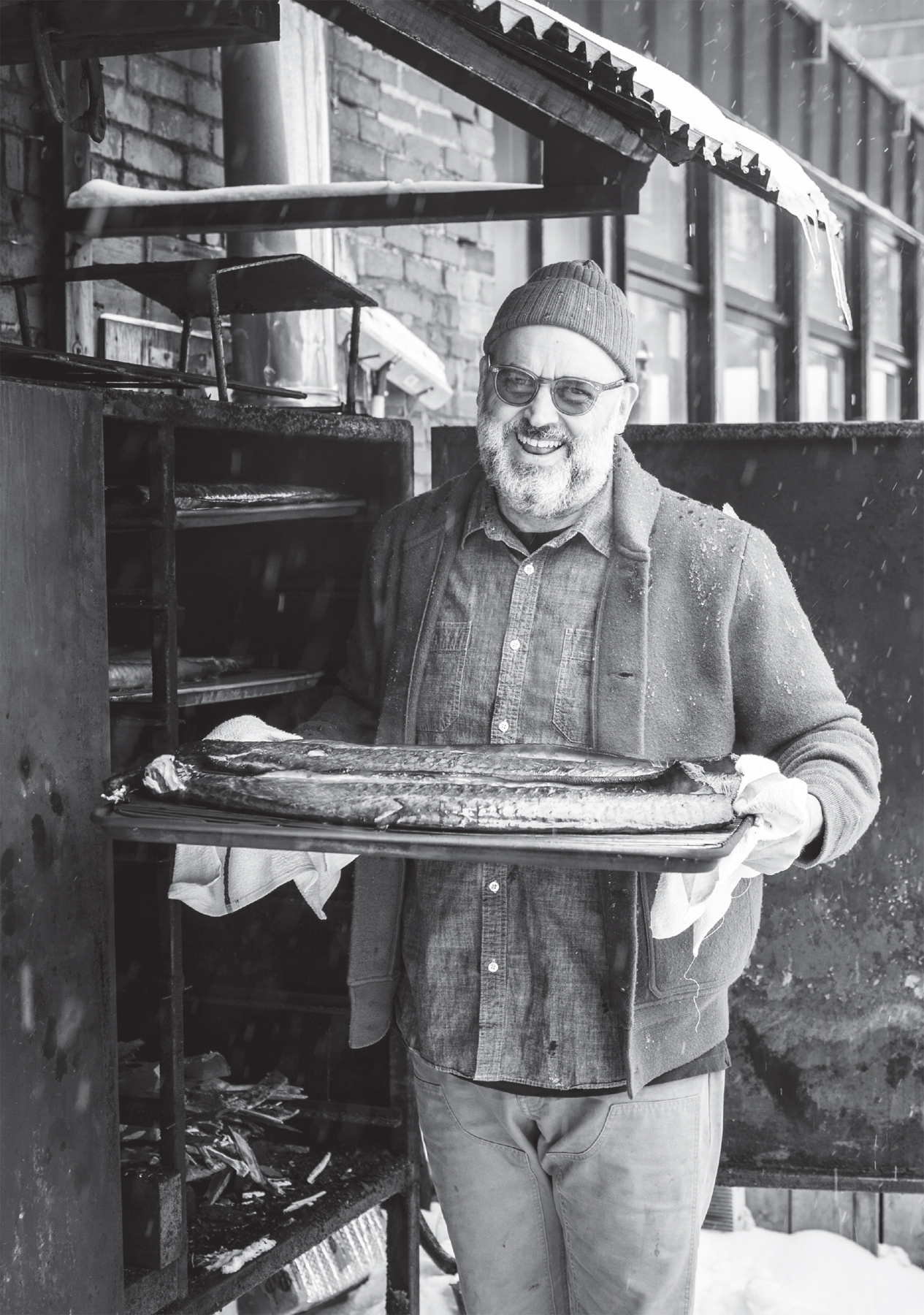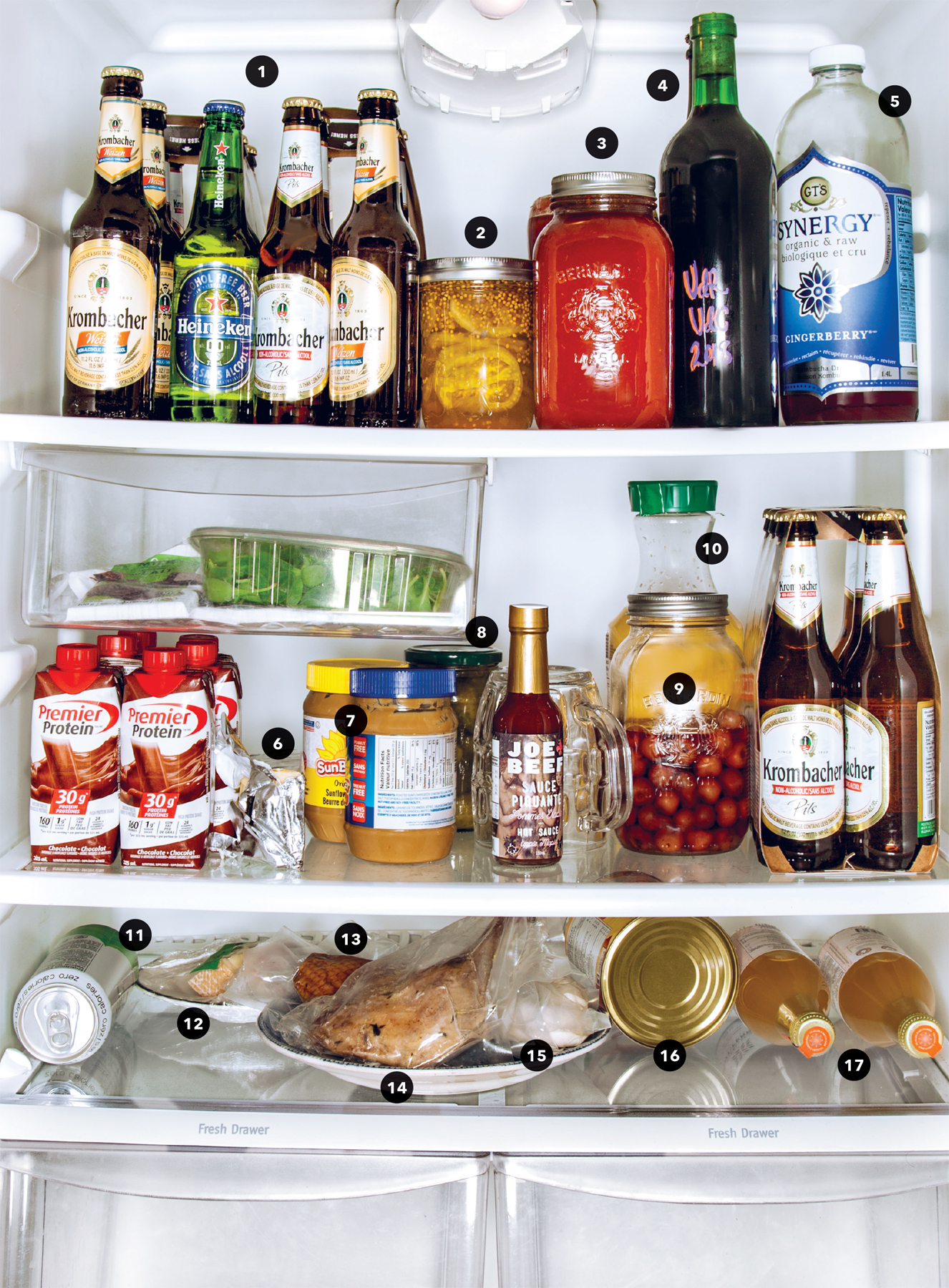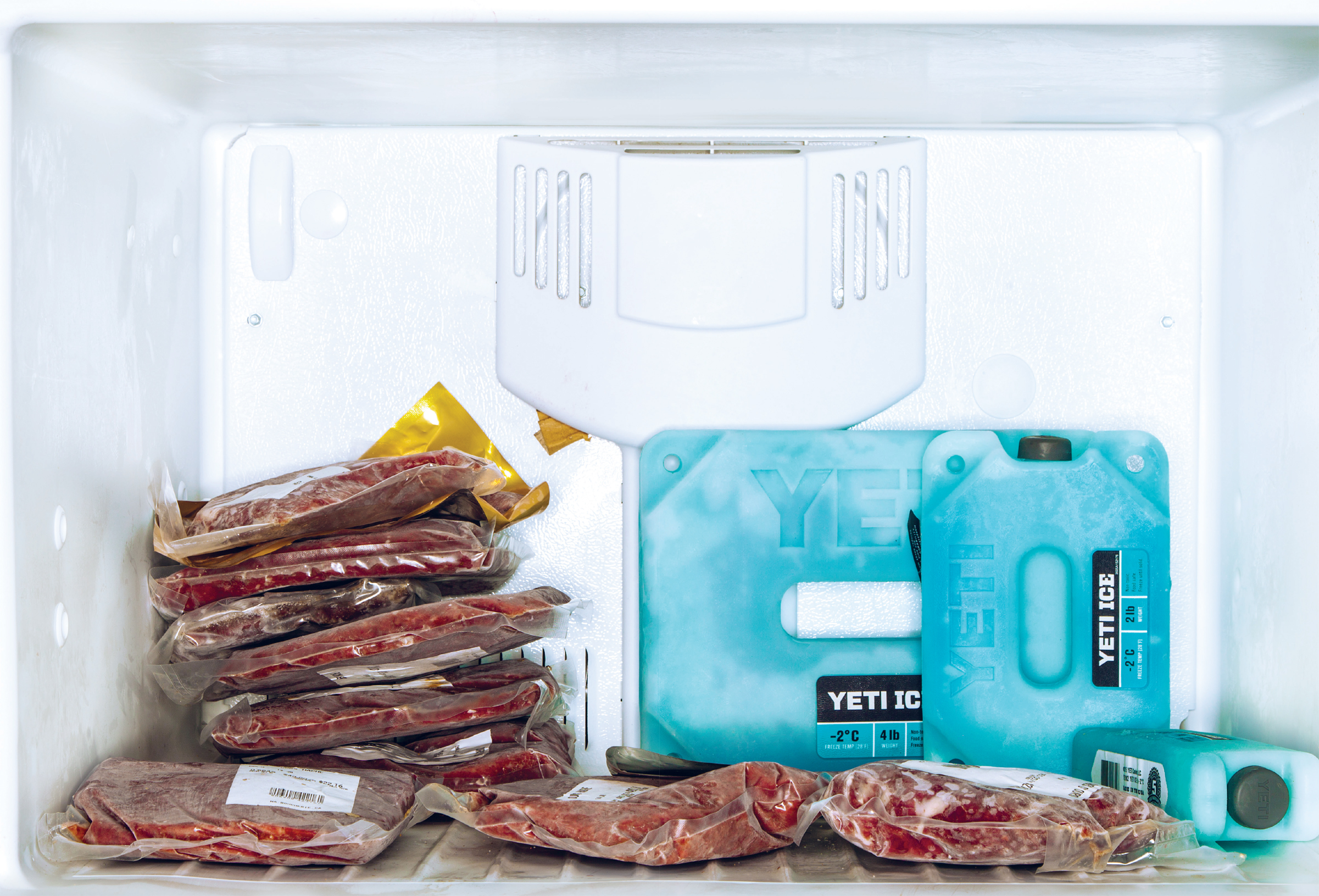For someone who prides himself on living out of Yeti coolers, who stores his nonalcoholic beer directly in the river’s crevice and aspires to live off the grid completely in a solar-powered house, having a conventional refrigerator is purely an afterthought. But that’s David McMillan—a renaissance man whose take on Quebec-style cooking is a sassy, tongue-in-cheek interpretation of French bourgeois cooking. His first restaurant, Joe Beef, landed on various best-restaurant lists, something McMillan and partner Fred Morin accept only begrudgingly. He hangs out at Joe Beef a little less these days now that the crowd has become less local and more fashionable. Yet it’s still a restaurant that is comfortable serving lobster and foie gras next to cans of Molson beer.
McMillan divides his time between a bachelor’s apartment—which feels more like an Airbnb crash pad and overlooks the alley garden with its cherry tree and trout pond that serve his restaurants—and two country homes, a rambling farm and a cabin he discovered while on a camping trip as a child. He spends more time on the farm with his three children and whoever drops by—friends, coworkers, or his ex-wife. McMillan has a self-deprecating humor (he claims his career “still hasn’t taken off”) and is unpretentious about his cooking; he isn’t above smashing Pringles for simple potato pancakes, for instance.
His rough-and-tumble upbringing may explain that lack of pretention. He cooked with his grandmother and always appreciated her Saturday roast chicken. He didn’t have a knack for schoolwork but liked eating in good restaurants—at least the ones he could afford with the money he made dealing drugs. David ended up in the kitchen more or less by chance—“I used to sell weed to a chef, and one night he asked me to help out,” he recalls—but within three days on the job as a commis chef, he impressed Pierre Elliot Trudeau with his mussel soup. He was hooked and quickly got his first official post at Le Caveau in Montreal. “It was staffed by old French cooks from Lyon who had come to Canada for the Centennial Festival in 1967,” he says. The restaurant taught him la cuisine du marché, or French market cooking, the type of cuisine featured at Joe Beef. “I still practice this form today as it’s the most logical way of cooking.”
McMillan’s apartment, which is above his restaurants, is handy for making quick trips out to the smoker or to his sprawling ad hoc garden. There are no gadgets in sight on his counters, just a cutting board and an aloe vera plant. He towers above his standard-size refrigerator and has taken to storing most items on the highest shelves for easier access. His fridge has a certain “born again” edge to it. After his children were born, he decided to stop his excessive drinking, and now keeps only nonalcoholic beer and protein drinks from Costco. You can find those next to his pickled produce and the duck confit pinched from his restaurant downstairs. He’s slightly overenthusiastic about nose-to-tail eating too, explaining “pigs ears—they are the calamari of the pig.” In all, he’s as adventurous as his clientele. “The dining population is very advanced here,” he says.

CURRENT HOMETOWN: Montreal, Canada
RESTAURANT THAT MADE HIS NAME: Joe Beef, Montreal
SIGNATURE STYLE: Seasonal French market cuisine
BEST KNOWN FOR: Serving lunch to Prime Minister Justin Trudeau and President Barack Obama; being on the World’s 50 Best Restaurant List; and his cookbooks, The Art of Living According to Joe Beef (a James Beard Award nominee) and Joe Beef: Surviving the Apocalypse
FRIDGE: Frigidaire

- KROMBACHER NONALCOHOLIC WHEAT BEER—“I talked about my favorite nonalcoholic beers on the radio and since then everyone is sending me some.”
- PICKLED GREEN TOMATOES
- JOE BEEF MARINARA SAUCE—“This is from end-of-the-season tomatoes straight from my garden.”
- HOMEMADE WINE, a naturally effervescent wine from Ontario pinot noir grapes
- GINGERBERRY KOMBUCHA
- BUTTER—“I always use salted.”
- SUNFLOWER SEED BUTTERS—“I like to have a choice between smooth and chunky. I’m allergic to peanuts.”
- PICKLES
- CHERRIES—“We made about sixty jars this year from the cherry tree in the alley.”
- ORANGE JUICE
- GREEN TEA
- GOOSE HAM, from cured, smoked goose breast
- DUCK LEG CONFIT
- PIG’S EAR
- ENDS FROM THE CHEESE BOARDS AT THE RESTAURANTS—“I bring whatever is left on Saturday night here or to the farm. It could also be the end of a roast or a last duck leg. I’ve never sat down to eat in my restaurant in my life. It’s bad luck. I was brought up in the French system where you don’t do that.”
- CANNED PEACHES—“I love cold peaches. I eat them straight out of the can or with ice cream, whipped cream, or condensed milk. If you are out of maple syrup you can also pour the peach syrup over crepes with salted butter.”
- KOMBUCHA

BEAR MEAT
Q & A
Describe your farmhouse refrigerator. I have an 1840s farmhouse with a mini fridge and a Yeti cooler. The basement stores potatoes, carrots, onions, sausages, ham, and honey. I eat that stuff, to be honest. If I need anything there is a pig farm and a chicken farm across the road. I can also live on bread and cheese and sunflower seed butter.
That sounds very back to basics. I have another place where I go in the summer up north, a cabin that is only accessible by boat. Generally I live off the coolers. There is a river on the property with a pit. I put the beverages down into a crevice. In the summer when it’s blazing hot, the beer is literally one degree Celsius. The old-timers have a technique in the winter: they leave their wine and booze in a crate at the bottom of a local lake. As it’s so deep, it doesn’t freeze.
Something you can’t live without when at your cabin? I can’t live without Darjeeling tea, in the winter or summer.
You mention using a cooler. Does it work well for you? I fill up the cooler at the frozen section of the grocery store. I might just get two frozen ducks, and then I put cold beverages next to the frozen ducks. Then I’ll put fruit and vegetables on top of the frozen ducks. Then I put eggs and dairy at the top. I build my Yeti from the bottom up, with the frozen stuff at the bottom and the fragile stuff at the top. I can leave it on the porch, and it’ll still be frozen for seven days. If you put a frozen turkey in a hard Yeti cooler, it will stay cold for two weeks.
You’ve got a lot of drinks in your refrigerator here. I drink Heineken 0.0—it’s nonalcoholic. Nonalcoholic beer is a bigger thing now with weed being legal. I think the weed people want to drink beer, but they can’t deal with the alcohol plus the weed. I really like kombuchas too. Some kombuchas are close to weird natural wines. There is middle ground between strange natural wines, kombucha, and artisanal beer.
Are those olives or cherries? They are cherries. They come from a tree in the alley. Even if it’s a parking alley, we plant a lot of food back there. Generally no one steals anything. People are respectful.
Do you travel to the USA much? I’m often bummed when I travel—there is no kidney, no duck. I like the eclectic range of protein here. I don’t really love steak.
Does everyone eat sweetbreads, liver, kidneys, and the like? Amazingly, yes—my kids and my customers.
How do you get your children to be adventurous eaters? I put what I make on the table. There is always fruit, like apples, and cheese, and there is also liver or beef. They choose.
Do you have any food vices? I eat a lot of milk chocolate and Pringles, especially off-brand Pringles. They are actually healthier.
What do you keep in your freezer? I have bear meat in the freezer. I can’t keep bear downstairs in the restaurant as it’s wild game.
Do you hunt? It’s from my neighbor. I mainly trap—mainly hares. Wild turkeys aren’t so good. They are dry, and they taste like poop.